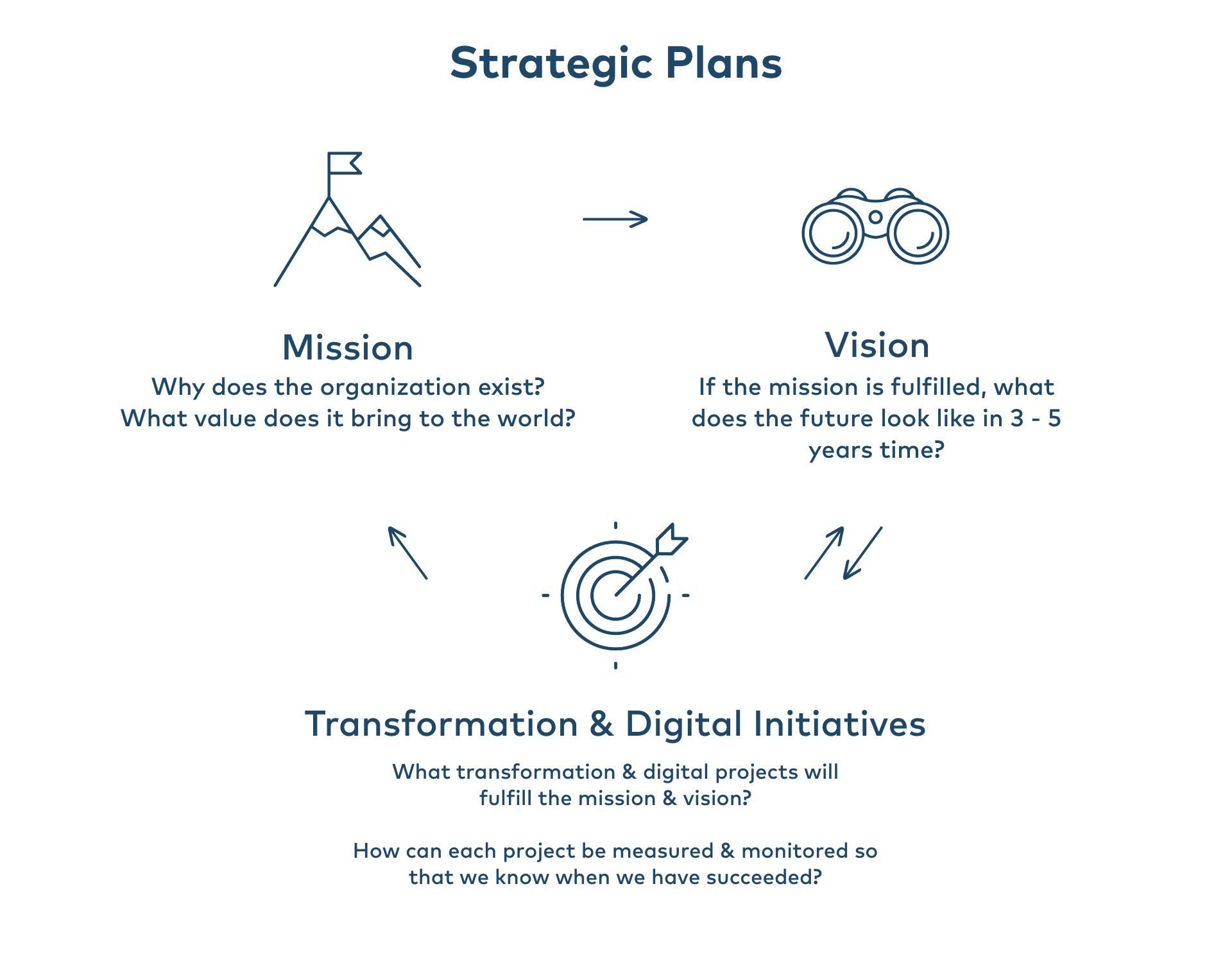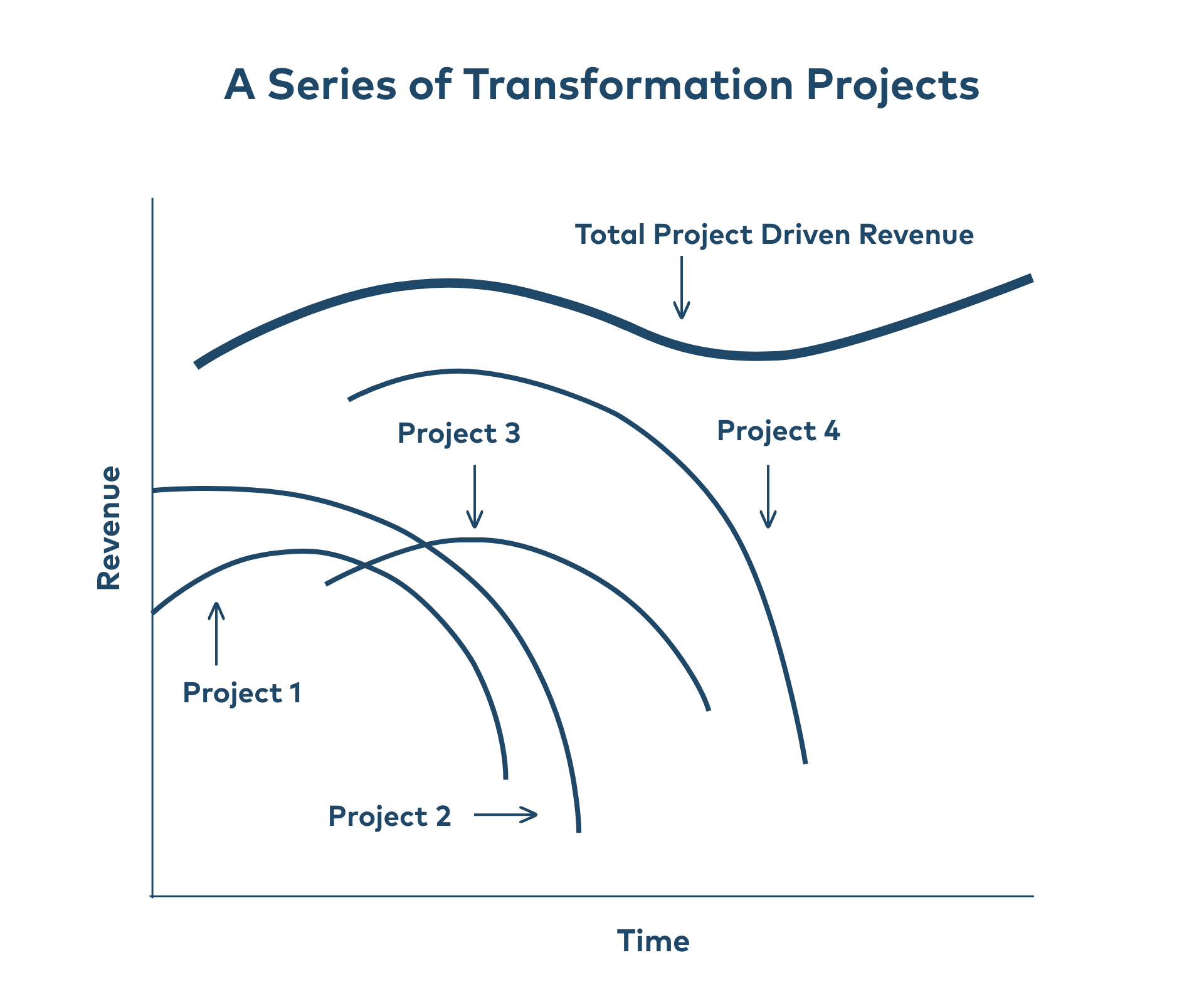The Truth about Digital Transformation Failures
Successful businesses and executives understand that digital evolution is essential to survive in today’s market, and yet, seventy percent of digital transformations fail. It begs the question: What causes digital transformation failures?
Professionals of all disciplines claim to have the answer. Software engineers attribute the problem to wrong or unknown requirements and technical complexity, UX designers claim the root cause is poor user experience, change managers put it down to a lack of buy-in, communication and culture development, and digital transformation experts blame leadership not developing an effective digital strategy, and inability to scale pilot programs. The truth is, they’re all correct because there are multiple potential points of failure for any digital transformation project. The reality is that a breakdown at any point in the chain can put the whole project at risk.
Here are the six key digital transformation milestones that cause projects to fail, and what you can do to keep that from happening.
Why Digital Transformation Plans Fail
1. A Lack of Alignment on Company Mission, Vision, and Strategic Planning
Ironically, transformation does not start with technology. It starts with business, people, and well defined mission and vision statements. The mission should articulate why the organization exists, the purpose, and value, it brings to the world. The vision should articulate what the future will look like, in 3 - 5 years time, if the mission is fulfilled. Digital technologies are simply the enablers, or tools, for how to get there. All digital strategies, if executed successfully, should make the vision a reality. Digital initiatives will get off track if they are not tied to enabling the vision and mission.
Organizations need to have a vision to work towards, and this vision needs to be broken into short-term tactics. Without near-term measurable objectives, it will be difficult for digital teams to appropriately identify, prioritize, resource, and measure a project’s success. Furthermore, lack of agreement on vision and objectives can cause teams to debate about which initiatives to pursue. Digital portfolios may be created with conflicting objectives when there is not agreement on where the company is headed.
These challenges stem from the top, and a lack of alignment and communication from leaders. Direction is needed to help people at all levels understand the organization’s ultimate purpose. Innovation and transformation can then be championed as the vehicles that facilitate the vision. With this understanding, employees are more aware of what is needed from them to transform, which initiatives to pursue, are more comfortable with organizational change, and will have higher levels of technology adoption.
2. Not understanding the User Journey, Personas Needs, and Real Business Challenges to Solve
The next challenge is to reconcile an organization’s current challenges with its future aspirations. You can only define the scope of innovation by using the right insights to identify the real challenges. To do this, you’ll have to map the current state user journeys and personas and think about how they will have to change to enable the future state. Failing to map out current and future user journeys could cause an organization to lose sight of the most important challenges, deploy the wrong technology, have unrealistic business cases, and poor user experience.
3. Bad Business Cases
By understanding current state user journeys and business challenges, it is much easier to map the expected benefits from the future state. Only with an in-depth understanding of the current and future states can a solid business case be built.
An effective business case should go beyond finance. It should also clarify what’s needed from the technology to achieve the expected benefits, explicitly state assumptions, the expected performance parameters, and map features and requirements to value. This can act as a yardstick by which to measure potential tech solutions. Without it, you could end up draining resources on technology that won’t take you closer to your goals because you won’t be evaluating each technology, or design solution, through the lens of, “will this achieve the expected benefits in the business case?”. After all, if the expected value in the business case isn’t delivered, organizations may not categorize the project as a success, no matter how innovative the technology. It is important to get this right.
4. Underestimating Project & Program Management
Transformation efforts are always at risk without strong project management. Teams can have the best technology, the most user friendly design, but without solid project management, the initiative could go bust. Software projects can be especially complex and must be carefully managed at every stage of the process. Organizations that do not have digital as a core competency should invest in upskilling and recruiting top-tier project managers. Many are already doing this with engineering and design, and the investment should extend to digital project management. While there are countless ways that project management can go wrong, the following are common issues you can expect and plan for:
Planning & Execution Failures
○ Poor overall planning and estimations, especially financial
○ Project managers that fail to understand the user-centered design project lifecycle
○ Not replanning and adjusting regularly
○ Excessive changing or conflicting requirements throughout the project lifecycle
○ Unclear, unrealistic, or un-communicated expectations to teams and stakeholders
○ Lack of resources, or constantly changing resources throughout the project
○ Lack of effective progress tracking, or immeasurable milestones
○ Milestones that are too far in-between
○ Resource staffing that doesn't align with milestones and deadlines
○ Poor stakeholder management and communication, failure to manage expectations
○ Lack of proper risk assessments, and taking timely and appropriate mitigating actions
○ Technical and design objectives that supersede business objectives
Governance Stakeholder Failures
○ Failure to timely and effectively involve end-users and stakeholders
throughout the project
○ Lack of ownership, funding, and support from stakeholders
○ Changing stakeholders with new vision and goals
○ Low adoption and end-user engagement after handoff
5. Working from Assumptions, and Underestimating the Technical Complexity
As projects progress and teams look for solutions, it’s easy to slip into making assumptions about end-user behaviors and anticipated challenges. Without communicating the objectives, and actively validating and refining the business case assumptions, these beliefs can drift from reality and misdirect efforts away from relevant challenges. Any assumptions that are baked into the business case should be validated and refined regularly in touch-points with end-users throughout the project via interviews, usability testing, demos and roadshows.
The same also goes for scoping out and preparing for technical complexities. A failure to fully grasp their complexity could sink attempts to find an adequate solution by spending more time than estimated dealing with unforeseen challenges.
Although it may be tempting, teams should resist the urge to dive headfirst into problems and instead conduct a technical assessment. The results can then inform strategy, and ultimately confirm whether a project is viable with the given estimate.
6. Low Adoption and Not Preparing for Change
As with any organizational change, company culture can be a major sticking point when it comes to digital matters. Without winning hearts and minds of employees and end-users, any changes are likely to encounter resistance, which can be a barrier to new technology adoption.
This leads back to the need for effective communication, both to address resistance, and prepare users for their change journey.
Three Areas of Focus for Successful Transformations
With so many things that can go wrong, it’s hard to know where you should focus your efforts.
Perhaps the most helpful tip we can give comes from Adrian Garcia, our VP of Transformation & Strategy, who has found that “success in digital transformation is influenced by people – not technology.”
1. Culture
All employees need to understand an organization’s mission and vision and the role digital transformation will play in bringing them into reality.
Company culture must adapt to accommodate newly introduced technology and new ways of working. Communication plays a big part in this, but demos, experimentation, feedback and staff engagement are equally essential in generating support. Innovation leaders must focus on mindsets and behaviors as much as technology.
2. Planning
Businesses need to invest quality time, effort, and money into scoping out their projects before setting out to change the status quo.
It’s important to identify and understand real business and user challenges, have an idea of how a solution will address it, and know the resources needed to deliver in a user-centered design fashion. Through proper project planning, companies can avoid huge overspends and misalignments between different business centers.
3. Communication
Planning allows businesses to move cohesively through a transitory phase, but only if the change is communicated effectively.
This begins at the executive level, where leaders must set direction and inspire the workforce to be innovative. This also means listening to resistance points and understanding concerns. It is possible to overcome resistance by understanding and addressing concerns so that people can be motivated and inspired to accelerate the transformation.
Transform Your Approach to Transformation
Digital transformations are difficult. One wrong move and it could be back to the drawing board – an outcome that business leaders are naturally keen to avoid.
After years of tackling these issues, Daito has developed a formula that can dramatically cut the failure rate of transformation projects. With careful exploration, proper technology selection, and best in class user experience design, we help businesses to evolve.
By following the process, you can do it too.







